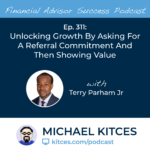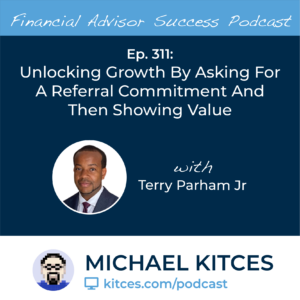This summer, the Financial Planning Association (FPA) announced a new multi-year advocacy goal to pursue legal recognition for the title of "Financial Planner", as a means for bona fide financial planners to distinguish themselves and their services from others (who may use the title but don't actually do financial planning), to help consumers understand who is qualified to provide financial planning advice, and to raise standards for the financial planning profession by tying competency and ethics standards directly to the determination of who can hold out to the public using the title in the first place.
Yet the irony of FPA's new initiative for Title Protection is that "Financial Planner" actually did have protected status as a title all the way back in 2005, when the SEC issued a rule that would allow broker-dealers to offer fee-based brokerage accounts without being required to register as investment advisers and be a fiduciary… and as a part of the rule, stipulated that anyone who held out to the public as a financial planner, delivered a financial plan to a client, or represented that they were providing financial planning advice, would still have to be an RIA fiduciary. But a lawsuit to block the rule ultimately led to it (and the associated Title Protection for "financial planner") being vacated… by the FPA.
In fact, the reality is that in the 15 years since this Title Protection was struck down in the FPA's lawsuit, the organization has actively pursued the opposite strategy of advocating for a uniform fiduciary standard – one that would not separate "financial planners" from others who don't meet the standards to use the title, but instead would simply subject all RIAs and broker-dealers to a single standard. Except in practice, there are many important functions that broker-dealers fulfill that truly are not fiduciary or advice-oriented, such that a uniform standard just isn't feasible. Which has led to both the Department of Labor and Massachusetts implementing uniform fiduciary standards that were both ultimately struck down in court, and the SEC simply refusing to implement a uniform standard at all. Making the FPA's shift to now suddenly advocate for Title Protection a logical – albeit head-spinning – about-face from its position for the past two decades.
At the same time, questions abound as to how the FPA realistically plans to pursue Title Protection, and its noticeable abstention from mentioning the CFP marks anywhere in its discussion of its new advocacy agency, despite the fact that the FPA is the membership association for CFP professionals. The organization's own Bylaws even state that its messaging to the public and the industry should be that "when seeking the advice of a financial planner, the planner should be a CFP professional", and that "anyone holding themselves out as a financial planner should seek the attainment of the CFP mark." Raising the question of whether the FPA is also considering an about-face on its CFP-centricity, too... even as the CFP Board has announced its own Competency Standards Commission to raise their own standards regarding who can use the Certified Financial Planner title?
Ultimately, the FPA has stated that it intentionally has only set a high-level strategic advocacy goal to pursue Title Protection, and that it will spend the next 12-18 months engaging with stakeholders to determine a specific course of action, with no expectation of any legislative efforts earlier than 2024. Which means there is still ample time for the FPA to clarify its intentions and any further swings in its advocacy views. Yet at the same time, the organization's withdrawal from the Financial Planning Coalition, its noticeable exclusion of the CFP marks from its initial positioning statement on Title Protection, its unwillingness to support XY Planning Network's 2021 petition for Title Protection (ironically to reinstate the Title Protection rule that FPA vacated), and its declaration that it intends to enact Title Protection without licensing or regulation (raising the question of how the title could be protected, if no regulator or licensing agency is granted the authority to protect the title?), all suggest that the FPA may already have some plans in place… that it just isn't ready to share yet?
In the end, Title Protection is clearly a laudable goal – one that has been pursued by many industry organizations for years, even if the FPA has only recently arrived at a similar conclusion – and the FPA's willingness to take up the issue is a positive sign, serving as a potential fulfillment of P. Kemp Fain, Jr.'s famous "One Profession, One Designation" call to action. Still, though, the question remains: What exactly is the FPA's plan to pursue Title Protection, will it be able to effectively engage with stakeholders and other organizations that already have established efforts and a vested interest in the outcome, and will it be able to maintain the effort through to fruition in the midst of making 1 and perhaps 2 major about-faces in its advocacy approach?






 Welcome back to the 311th episode of the Financial Advisor Success Podcast!
Welcome back to the 311th episode of the Financial Advisor Success Podcast!
